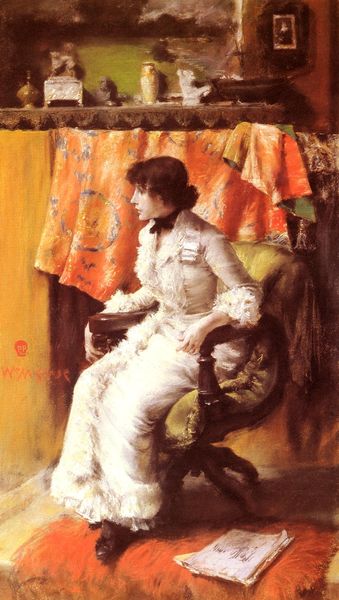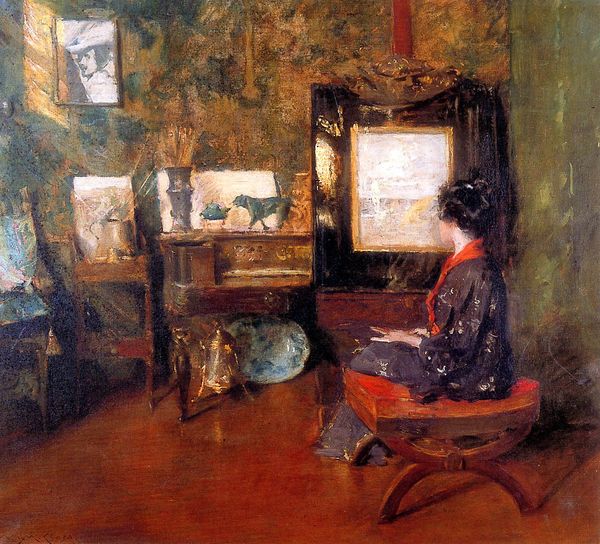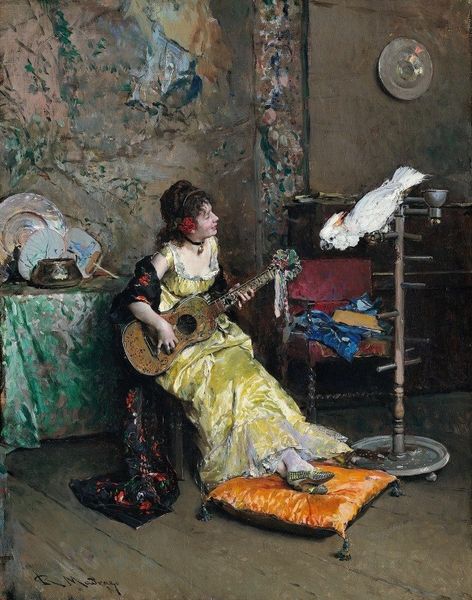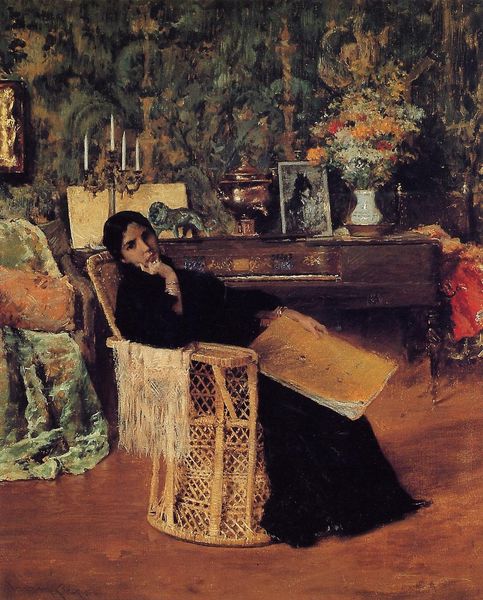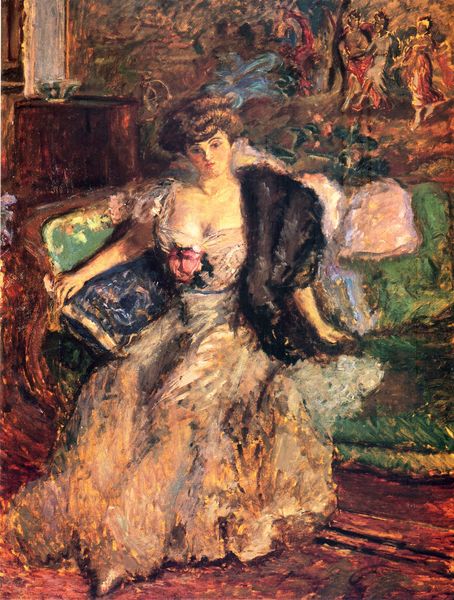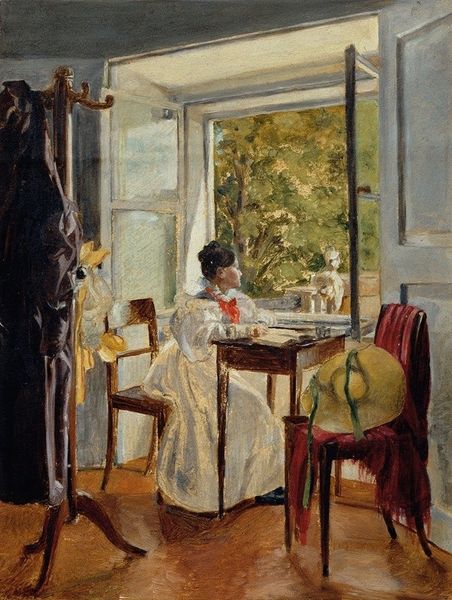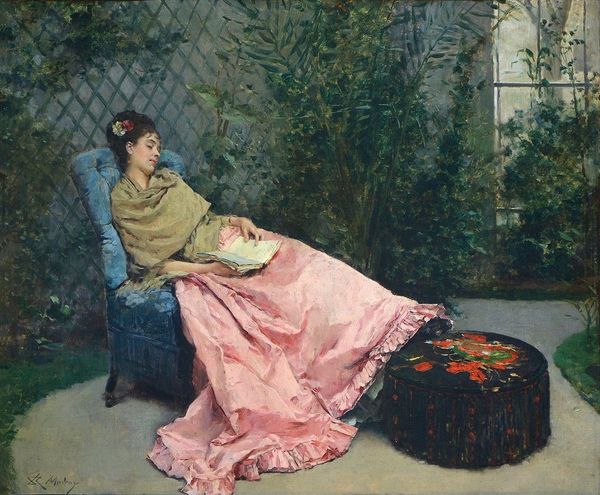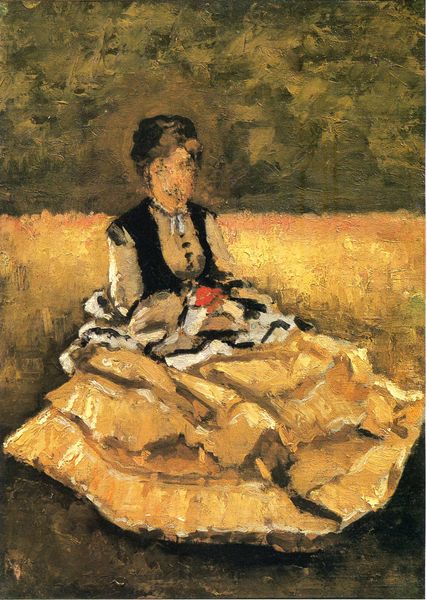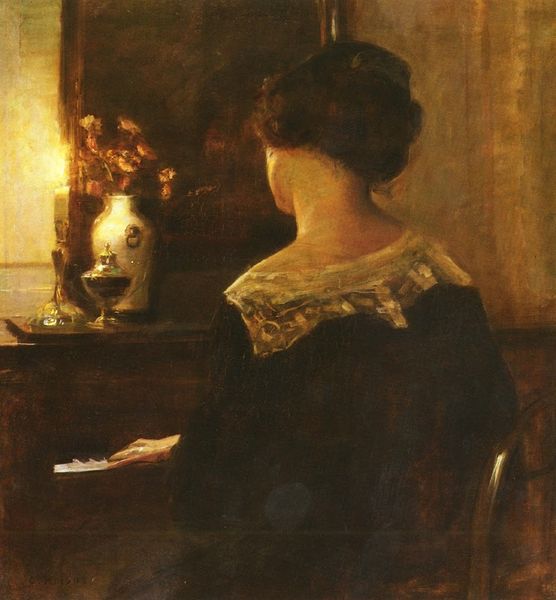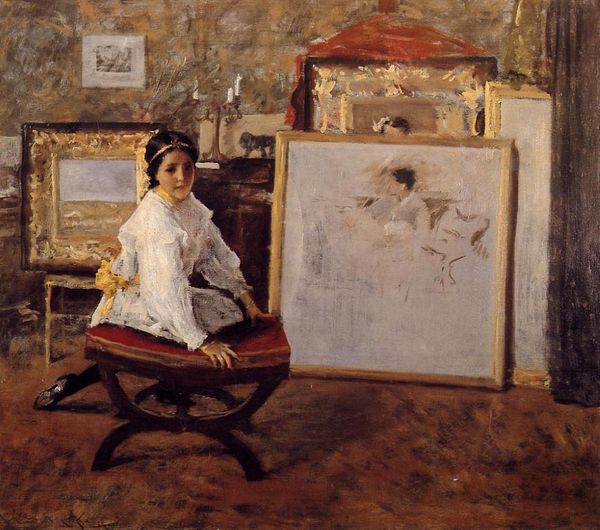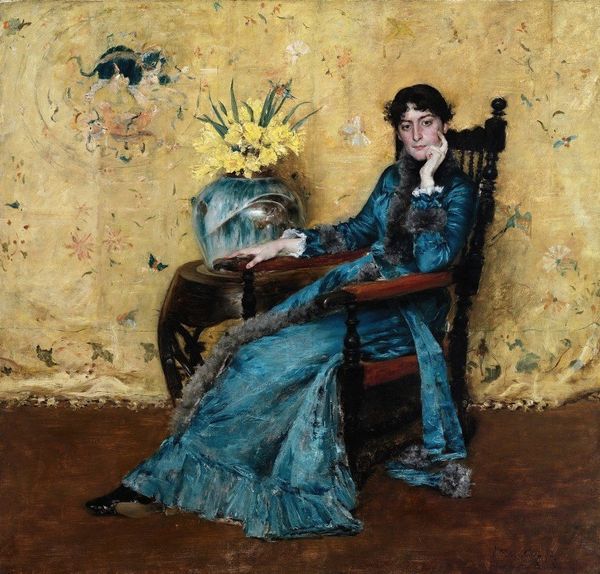
Dimensions: 89.5 x 115 cm
Copyright: Public domain
Editor: Here we have William Merritt Chase’s "The Kimono" from 1895, an oil painting with such a rich, warm palette. It gives a feeling of intimacy and perhaps a bit of exoticism. What stands out to you about this piece? Curator: What I see is not merely a painting but a confluence of artistic and economic forces. Chase, a prominent American Impressionist, is engaging with the craze for Japanese aesthetics that swept the Western world in the late 19th century, a movement known as Japonisme. This wasn't just about appreciating art, but also consuming a lifestyle. Consider the kimono itself - a traded commodity, its silk, dye, and stitching the product of extensive labour. Editor: So it's about the labor behind the object as well as the object itself? Curator: Precisely. Look at the arrangement; the kimono, the folding screen, even the prints scattered on the floor, these were commodities eagerly acquired by the burgeoning middle class, aspiring to elevated cultural status through purchasing worldly, crafted goods. Do you see how Chase himself participates in, and perhaps critiques, the cycle of production and consumption? Editor: I didn’t really think of the art as commentary on consumerism but it’s clear the acquisition and display of these crafted objects were central to this art movement. So how do you read the woman, the sitter in this painting? Curator: Is she admiring the garment, flaunting the family's wealth, or considering another item from a distant land? Chase shows, but he doesn't explicitly say what. Perhaps a look at Chase's career as a teacher would clarify, particularly in his emphasis of material appreciation, and how that was influenced by the production conditions in the context of the Gilded Age. Editor: Thinking about the materials and their history adds so much to how I understand the painting! Thanks! Curator: Indeed, recognizing the social life of things enhances our grasp of artistic intent and output.
Comments
No comments
Be the first to comment and join the conversation on the ultimate creative platform.
